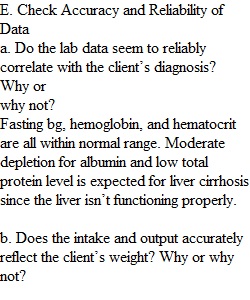


Q Before you complete today's Nutrition Case Study Download Nutrition Case Study, I want you to look over this nutritional assessment document Download nutritional assessment document(Academy of Nutrition and Dietetics Evidence Analysis Library: https://www.andeal.org/). Think about each aspect of nutritional assessment that is highlighted. How will you focus on each of these aspects with the case study? For the Case Study: Groups 1 and 2: Question A Group 3: Question B and C Groups 4 and 5: Question D Groups 6 and 7: Question E Group 8 and 9: Question F and G Additional Questions----We will discuss these in class as well Groups 1 and 2: Question 1 and 2 Group 3 and 4: Question 2 and 3 Groups 5 and 6: Question 2 and 4 Groups 7 - 9: Question 2 and 5 1. Describe education the nurse can provide for 3 different food safety issues. 2. How many calories are in each serving? 3. Prepare a comparative chart based on the physical differences you would see when performing a physical survey of a client who had good nutritional status versus a client with poor nutritional status. • Hair • Eyes • Skin • Weight 4. A nurse is assessing a 70-year-old client admitted to an extended care facility. Assessment reveals dry, scaly skin, and poor skin turgor in the client. Further assessment reveals that the client’s fluid intake is less than normal. The client states she is not feeling thirsty and has been complaining of diarrhea for 2 days. What are risks that the nurse should note for the client? What nutritional assessment and planning would be required for the client? 5. Describe the differences and similarities and any potential controversies regarding diets: 1. low carbohydrate/high protein diet, 2. anti-inflammatory diet and 3. low glycemic index diet.
View Related Questions